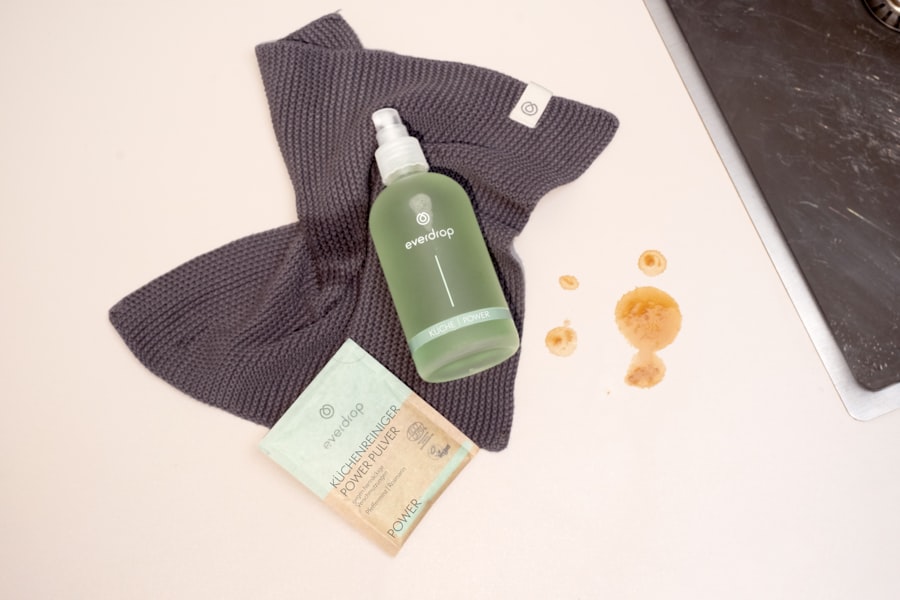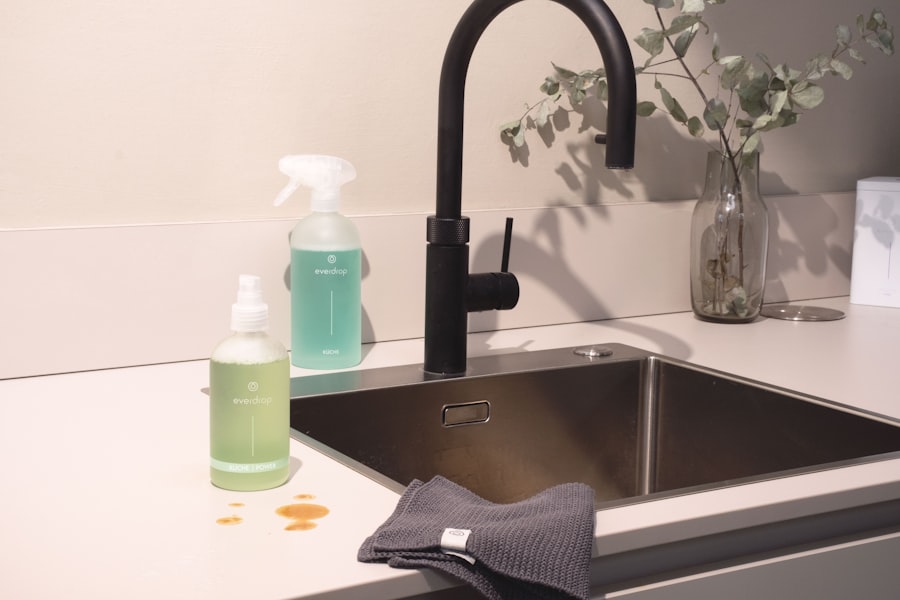When you choose green cleaning products, you are not just making a choice for your home; you are also making a choice for the planet. One of the most significant benefits of these eco-friendly alternatives is their reduced impact on the environment. Traditional cleaning products often contain harsh chemicals that can pollute waterways and harm wildlife.
By opting for green products, you contribute to a cleaner ecosystem, ensuring that the air and water remain safe for future generations. This conscious decision reflects a growing awareness of environmental issues and a commitment to sustainability. Moreover, green cleaning products are often safer for your health.
Many conventional cleaners contain toxic substances that can lead to respiratory issues, skin irritations, and other health problems. In contrast, green products typically use natural ingredients that are less likely to cause adverse reactions. This is particularly important if you have children or pets at home, as they are more vulnerable to the effects of harmful chemicals.
By switching to green cleaning solutions, you create a safer living environment, allowing you to breathe easier and feel more at ease in your own space.
Key Takeaways
- Green cleaning products are better for the environment and for your health, as they are made with natural and non-toxic ingredients.
- Look for certifications such as EcoLogo, Green Seal, or USDA Organic to identify sustainable cleaning products.
- Make your own green cleaning products at home using simple ingredients like vinegar, baking soda, and essential oils.
- Traditional cleaning products can have a negative impact on the environment, contributing to air and water pollution.
- Some top green cleaning brands include Seventh Generation, Method, and Mrs. Meyer’s, offering eco-friendly and non-toxic cleaning options.
How to Identify Sustainable Cleaning Products
Identifying sustainable cleaning products can be a straightforward process if you know what to look for. Start by examining the ingredient list on the label. Look for products that use plant-based ingredients rather than synthetic chemicals.
Ingredients like vinegar, baking soda, and essential oils are often indicators of a more eco-friendly product. Additionally, avoid products that contain phosphates, chlorine bleach, or artificial fragrances, as these can be harmful to both your health and the environment. Another key factor in identifying sustainable cleaning products is to look for certifications.
Many brands display eco-labels that signify their commitment to environmental standards. Certifications from organizations such as the Environmental Protection Agency (EPA) or Green Seal can provide assurance that the product meets specific criteria for safety and sustainability. Furthermore, consider the packaging; products that use recyclable or biodegradable materials are often more sustainable than those in plastic containers.
By being vigilant about these details, you can make informed choices that align with your values.
DIY Green Cleaning Recipes for a Chemical-Free Home

Creating your own green cleaning solutions at home can be both cost-effective and rewarding. One simple recipe involves mixing equal parts of water and white vinegar in a spray bottle. This solution works wonders for disinfecting surfaces and cutting through grease without the need for harsh chemicals.
You can also add a few drops of essential oils like lemon or tea tree oil for added antibacterial properties and a pleasant scent. Another effective DIY cleaner is a baking soda paste, which can tackle tough stains and odors. Combine baking soda with a small amount of water to form a paste, then apply it to surfaces like sinks or countertops.
Let it sit for a few minutes before scrubbing it away with a damp cloth. This natural abrasive is gentle yet effective, making it an excellent choice for maintaining cleanliness without compromising your health or the environment.
The Environmental Impact of Traditional Cleaning Products
| Environmental Impact | Traditional Cleaning Products |
|---|---|
| Water Pollution | Contain chemicals that can contaminate water sources |
| Air Pollution | Release volatile organic compounds (VOCs) into the air |
| Energy Consumption | Require energy-intensive manufacturing processes |
| Waste Generation | Produce non-biodegradable packaging and waste |
The environmental impact of traditional cleaning products is often underestimated. Many of these products contain volatile organic compounds (VOCs) that can contribute to air pollution and smog formation. When these chemicals are released into the air during use or disposal, they can have detrimental effects on both indoor and outdoor air quality.
This is particularly concerning in urban areas where air pollution is already a significant issue. Additionally, the production and disposal of conventional cleaning products contribute to environmental degradation. The manufacturing processes often involve the extraction of non-renewable resources and generate waste that can harm ecosystems.
When these products are discarded, they may end up in landfills or waterways, where they can leach harmful chemicals into the soil and water supply. By understanding these impacts, you can appreciate the importance of choosing greener alternatives that prioritize both your health and the planet’s well-being.
Top Green Cleaning Brands and Their Eco-Friendly Products
As the demand for sustainable cleaning solutions grows, many brands have emerged to meet this need with innovative products. One standout brand is Seventh Generation, known for its commitment to using plant-based ingredients and environmentally friendly packaging. Their range includes everything from laundry detergents to all-purpose cleaners, all designed with sustainability in mind.
Another notable brand is Method, which combines effective cleaning power with stylish design. Method’s products are made from biodegradable ingredients and come in recyclable packaging, making them an excellent choice for eco-conscious consumers. Their unique scents and vibrant colors also make cleaning feel less like a chore and more like an enjoyable experience.
By exploring these brands and their offerings, you can find effective cleaning solutions that align with your values.
Tips for Incorporating Green Cleaning into Your Daily Routine

Incorporating green cleaning into your daily routine doesn’t have to be overwhelming; small changes can make a significant difference over time. Start by gradually replacing your conventional cleaning products with eco-friendly alternatives as you run out of supplies. This approach allows you to transition smoothly without feeling pressured to overhaul your entire cleaning arsenal at once.
Additionally, consider setting aside specific days for deep cleaning tasks using your green products. For instance, designate one day a week for bathroom cleaning with your homemade vinegar solution or use baking soda paste for kitchen surfaces on another day. By establishing a routine that incorporates green cleaning practices, you not only maintain a clean home but also reinforce your commitment to sustainability.
The Importance of Using Non-Toxic Cleaning Supplies
Using non-toxic cleaning supplies is crucial for maintaining a healthy home environment. Many conventional cleaners contain harmful chemicals that can linger in the air long after you’ve finished cleaning, posing risks to your respiratory health and overall well-being. By choosing non-toxic alternatives, you minimize exposure to these harmful substances, creating a safer space for yourself and your loved ones.
Moreover, non-toxic cleaning supplies are often better for the environment as well. They typically break down more easily in nature and do not contribute to water pollution when washed down the drain. This means that by opting for non-toxic options, you are not only protecting your health but also playing a part in preserving the planet’s ecosystems.
The importance of this choice cannot be overstated; it reflects a commitment to both personal well-being and environmental stewardship.
How Green Cleaning Contributes to a Healthier Home Environment
Green cleaning contributes significantly to creating a healthier home environment by reducing indoor air pollution and minimizing exposure to toxic substances. Many conventional cleaners release harmful fumes that can irritate the lungs and exacerbate allergies or asthma symptoms. In contrast, green cleaning products often use natural ingredients that do not emit harmful vapors, allowing you to breathe easier in your home.
Furthermore, maintaining a clean home with eco-friendly products can enhance your overall well-being. A tidy space promotes mental clarity and reduces stress levels, while the absence of harsh chemicals creates a more inviting atmosphere. By embracing green cleaning practices, you not only improve the physical cleanliness of your home but also foster a sense of peace and tranquility within your living space.
This holistic approach to cleanliness underscores the interconnectedness of our health and our environment, reminding us that every small change we make can lead to significant benefits for ourselves and the world around us.
FAQs
What are sustainable cleaning products?
Sustainable cleaning products are cleaning solutions that are made from environmentally friendly and non-toxic ingredients. These products are designed to minimize their impact on the environment and human health throughout their entire life cycle, from production to disposal.
What are the benefits of using sustainable cleaning products?
Using sustainable cleaning products can help reduce exposure to harmful chemicals, protect the environment, and promote a healthier indoor and outdoor living environment. These products are often biodegradable, non-toxic, and made from renewable resources, making them a more sustainable choice for cleaning.
What are some common ingredients found in sustainable cleaning products?
Common ingredients found in sustainable cleaning products include plant-based surfactants, essential oils, vinegar, baking soda, and citric acid. These ingredients are non-toxic, biodegradable, and do not contribute to air or water pollution.
How can I identify sustainable cleaning products?
Look for products that are certified by reputable third-party organizations such as the Environmental Protection Agency’s Safer Choice program, Green Seal, or EcoLogo. These certifications ensure that the products meet specific environmental and health criteria.
Are sustainable cleaning products effective?
Yes, sustainable cleaning products can be just as effective as traditional cleaning products. Many sustainable cleaning products are formulated to effectively clean and disinfect surfaces without the use of harsh chemicals.
Where can I purchase sustainable cleaning products?
Sustainable cleaning products can be found at natural food stores, online retailers, and some mainstream grocery stores. Many companies also offer refillable options to reduce packaging waste.
